#icon mark pontius
Text


Left: detail of an icon of Jesus's Palm Sunday Procession.
Right: detail of a 1791 replication of a bas relief of the Triumph of Titus
[T]his demonstration harbored a dangerous message that would lead to Jesus's public execution by the end of the week. The way Jesus entered Jerusalem at the beginning of Passover week was a strategically organized demonstration.
Jesus's entire ministry was headed toward Jerusalem. Every time he had to leave a large crowd of sick people begging to be healed, it was because his journey was aimed toward Jerusalem. Word of Jesus's message had already spread to Jews in Jerusalem, and they were prepared to participate in these planned demonstrations. Mark 11 tells us that when Jesus and his disciples were approaching Jerusalem, he told two of his disciples, "Go into the village ahead of you, and immediately as you enter it, you will find tied there a colt that has never been ridden; untie it and bring it. If anyone says to you, 'Why are you doing this?' just say this, 'The Lord needs it and will send it back here immediately.'"
We don't know who was assigned to tie up the colt at the entrance, but taking the colt communicated to the crowds waiting in Jerusalem that Jesus was about to arrive. From the Mount of Olives, Jesus entered through the east entrance of Jerusalem on the colt while a crowd surrounded him, preparing the road for Jesus by spreading their cloaks and "leafy branches that they had cut in the fields" on the ground. And they shouted, "Hosanna! Blessed is the one who comes in the name of the Lord! Blessed is the coming kingdom of our ancestor David! Hosanna in the highest heaven!"
This deliberate sequence of actions was a symbolic reenactment of the prophecy of Zechariah. Zechariah 9:9 says, "Rejoice greatly, O daughter Zion! Shout aloud, O daughter Jerusalem! Lo, your king comes to you; triumphant and victorious is he, humble and riding on a donkey, a colt, the foal of a donkey." Matthew even directly quotes the verse in his account.
This was a purposefully timed demonstration that would also remind people of the next verse in Zechariah 9: "He will cut off the chariot from Ephraim and the war-horse from Jerusalem; and the battle bow shall be cut off, and he shall command peace to the nations; his dominion shall be from sea to sea, and from the River to the ends of the earth."
Although the gospel accounts do not report this detail, we know that the Roman governor Pontius Pilate arrived in Jerusalem at the beginning of the Passover Week as well. First-century Jewish historian Josephus wrote that during every Passover, Pontius Pilate and a legion of Roman soldiers spent the week in Jerusalem because of an increased chance of an uprising as Jews celebrated the event of the Exodus. The Romans wanted to make sure nobody got any dangerous ideas as they recounted God's attack on Egypt and the liberation of the Israelites.
So as Jesus humbly entered Jerusalem from the east on a donkey, surrounded by a crowd of peasants and leafy branches, Pontius Pilate was likely entering Jerusalem from the west on a chariot led by a war horse, surrounded by a legion of Roman soldiers with armor and deadly weaponry. In their book on Jesus's last week in Jerusalem, John Dominic Crossan and Marcus Borg point out, "What we often call Jesus's triumphal entry was actually an anti-imperial, anti-triumphal one, a deliberate lampoon of the conquering emperor entering a city on horseback through gates open in abject submission.
The symbolism is packed with meaning for the lives of those in the crowd surrounding Jesus. This demonstration exposed two warring kingdoms: the kingdom of Rome, with the power and weapons on their side, and the kingdom of God with the people on their side, desperate for liberation.
Damon Garcia (The God Who Riots: Taking Back the Radical Jesus, pages 146-148). Bolded emphases added.
#Christianity#Jesus Christ#Kingdom of God#The World#Palm Sunday#peace#war#imperialism#Pontius Pilate#symbolism#Gospel of Mark#Book of Zechariah
7 notes
·
View notes
Text
Star Power Assembles for "The King of Kings"

Get ready for a visually stunning and star-studded retelling of the life of Jesus Christ! Mofac Animation's new upcoming film, "The King of Kings" isn't your everyday Sunday school cartoon. At first glance "The King of Kings" easily boasts a powerhouse voice cast. The cast includes legendary actors Sir Ben Kingsley, Pierce Brosnan, and Mark Hamill
Kingsley lends his iconic voice to High Priest Caiaphas, who oversaw Jesus' trial. Hamill takes on the role of King Herod, infamous for the Massacre of the Innocents. And Brosnan brings Pontius Pilate, the man who ultimately ordered Jesus' crucifixion, to animated life. These heavyweights join an already impressive cast featuring Academy Award winners Kenneth Branagh and Forest Whitaker. There's also Golden Globe winners Oscar Isaac and Uma Thurman, and rising star Roman Griffin Davis too!
A Dickens of a Tale
The film takes a unique approach, following Charles Dickens and his youngest son Walter on a fantastical journey through time. Dickens uses his storytelling magic to bring the life of Jesus, his struggles, and his adversaries to life for his son. This creative twist allows the story to be relatable and engaging for audiences of all ages.
The talent doesn't stop on screen. "The King of Kings" is directed by Seong-ho Jang, a highly respected Korean filmmaker known for his groundbreaking visual effects work. The script is a collaboration between Jang and Rob Edwards, who has writing credits on Disney classics like "The Princess and the Frog" and "Treasure Planet." With this team at the helm, "The King of Kings" promises to be a visually stunning and emotionally powerful experience.
A Story for the Ages
"The King of Kings" isn't just another animated film. It's a chance to experience one of the most important stories ever told in a fresh and engaging way. The all-star cast, innovative storytelling, and talented production team make this a must-see for families and anyone interested in the life of Jesus Christ.
Bonus Fun Fact: Did you know "The King of Kings" is actually based on a little-known short story by Charles Dickens himself? This lesser-known work adds another layer of intrigue to this upcoming animated epic.
While a release date hasn't been officially announced, "The King of Kings" is expected to hit theaters sometime around Easter 2025. Keep an eye out for more details and get ready for a truly unforgettable cinematic experience!
Source: Mofac Animation
Read the full article
0 notes
Photo







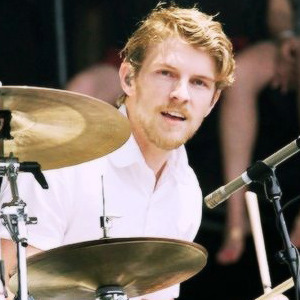
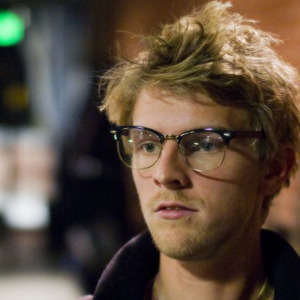
Like or reblog if you use / save
If you want more request here
2 notes
·
View notes
Text
youtube
Where things will change, but I'll always be the same
#mark pontius#mark psd icons#foster the people // the thuth#foster the people#isom innis#lyric aesthetics#lyrics#video#sean cimino#lamb's wool#lambswool#new track#Youtube
13 notes
·
View notes
Photo









like or reblog if you save/use ♡ • like or credits on @semidovelie
#mark pontius#foster the people#icons#icons mark pontius#mark pontius icons#icons foster the people#foster the people icons
63 notes
·
View notes
Photo
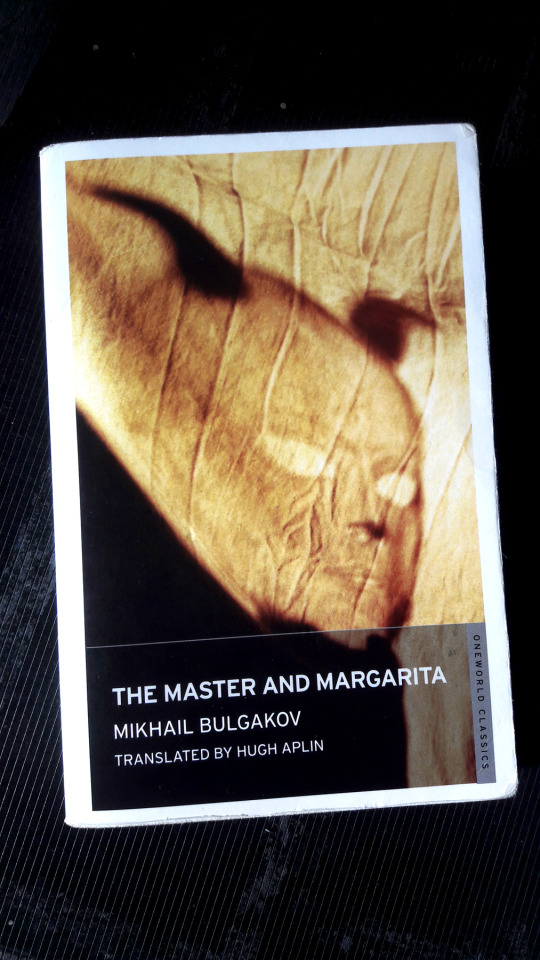
The Master and Margarita by Mikhail Bulgakov
It has been at least 8 months since I finished reading this novel, and now I’m finally posting the last part of my review.
Part 3 – Margarita, Feminist Icon or Romantic Cliché?
Spoilers.
The Master, a thirty-something recluse male writer, first sees Margarita walking down the street. She has in her arms a bouquet of yellow flowers. The Master follows her, they exchange hellos and she asks him if he likes her flowers. He says no. She proceeds to throw the flowers in the gutter.
This is not a promising introduction to our heroine: a heroine who is quick to throw something away because a random man dislikes it. The situation doesn’t get any better after that; the two become infatuated with each other, and she becomes obsessed with his writing, with his “genius”, so much so that it is she who names him “The Master”. For me a clichéd classical heroine is characterized by two things: first she is young and pure, pure in spirit and body (i.e. meek and clueless). Secondly, she is hopelessly dedicated to her man, he is all she lives for. Now on the first point Margarita does not qualify, she’s a married woman having an affair with another man, not surprising considering Bulgakov’s taste for married women. But Margarita absolutely fulfils the second criteria: her main characteristic as a character is how unfailingly devoted she is to her lover.
The novel is split into two parts and if it weren’t for the events of the second then her character would be very dull indeed. In the first part most of the action is focused on the Devil’s appearance in Moscow and the chaos his companions inflict on the inhabitants of the city. We’re briefly introduced to the characters of the Master and his lover Margarita. We’re told of how she supported his writing, and how he fell into depression when his novel about Jesus Christ and Pontius Pilate was ostracized by the Russian literary scene. There’s a passage in the novel in which Bulgakov explains that Margarita married young, now years later she’s living in a nice house, she’s a woman of leisure, she has money and her husband is decent enough, so why is she so unhappy? Bulgakov argues that she clearly needs the Master, she needs to live with him in that hole in the wall apartment and share his sorrow and pour herself into his work. Well Bulgakov you missed the mark. Margarita is so insanely attached to the Master’s novel (he gets jealous that she cares more for it than for him) that it seems clear to me that what she really needs isn’t the Master but for herself to get a job as an editor. What she needs is a challenge.
The first part of the novel jumps from character to character in alternating short comedic scenes, it is only in part two that the novel starts to feel more like a novel, it is the first time that more than two chapters (five to be exact) are dedicated to the same storyline: Margarita.
In this second part, one of the Devil’s companions offers Margarita a way to be reunited with her precious lover, whom she hasn’t seen in a long time, ever since he, willingly, disappeared from her. She is given a cream and told to apply it at midnight, she does so and turns into a witch, she feels a sense of liberation, removes all her clothes, grabs a broom and flies out into the night. After a few incidents she then meets the Devil and makes a bargin with him: he offers to reunite her with the Master if she will be the hostess at his Ball for the dead tonight. She accepts and fulfils her part perfectly and in return the Devil delivers her the Master and wishes them a happy life.
I have to say the second part of the novel, which relates to Margarita’s story, is what I enjoyed reading the most, it was a thrill to follow her new freedom and sense of adventure and wonder, and frankly a relief to be following a linear narrative. Margarita is the only character in the novel who takes action, the only one to be brave enough to face the Devil, take on his challenges and gain what she wants in the end.
And yet Margarita became a witch and got involved in the Devil’s business, she’s a heroine but one who gets mixed up with unholy things, and even before that she was an adulterer. In this sense she is a new type of heroine. There is a key moment in the Devil’s Ball when Margarita has to greet the Devil’s guests who are all dead sinners. She greets a woman who is deranged and keeps going on about a handkerchief, when she was alive she worked in a café, the owner “pressed her to join him in the pantry once, and nine months later she gave birth to a boy: she carried him off to the wood and stuffed a handkerchief into his mouth and then buried the boy in the ground. At the trial she said she had nothing to feed the child with.” To this Margarita asks what about the café owner? And one of the Devil’s minions replies: “what ever has the owner got to do with it! After all, he didn’t smother the baby in the wood!”
Now in the afterlife this woman is everyday presented with a handkerchief with a blue border identical to the one she used to kill her child, every day she destroys it and every morning she is presented with it anew, she is being forever tormented by the handkerchief, by her crime. When Margarita finishes her service to the Devil she asks that the torment to this woman be stopped. This shows a higher, more complex level of compassion than we usually see in romantic heroines. It’s easy to show a heroine to be compassionate and charitable to those who are innocent and poor, but here is compassion and understanding of how a person can be driven to acts of evil, and how they can be forgiven. And an acknowledgment of the man’s part in a woman’s ruin.
So apart from the character Margarita, are there any other moments that could tell us what was Bulgakov’s attitude towards women? Well whenever there are public incidents in The Master and Margarita, Bulgakov specifies that there are women screeching and wailing, implying that women will always be the ones to loose composure first and be “hysterical”. A character, angry with himself, exclaims “An idiot, a foolish woman, a coward! Carrion’s what I am, not a man!”. When one of the Devil’s minions approaches Margarita for the first time, he exclaims “Difficult people, these women!” when she is confused by his cryptic messages, a few minutes later he warns her “No dramas, no dramas”.
And then there’s Nakedness, nakedness is an important theme, there are five instances of nakedness:
1. The Devil has a group of four minions, one of whom is a woman, and she is always naked. Her nakedness is used to enthral and surprise her male victims on a number of occasions, but she is also described as a maidservant, who later in the book kneels down and rubs the Devil’s feet.
2. At the Devil’s stage performance in a theatre, his goons offer the people money, which later disappears, and to the women new frocks and shoes, which they exchange their old dresses for and change into on stage behind a curtain. Later on as they are leaving the show the dresses disappear and they are left naked. Nakedness here is used to embarrass.
3. Margarita and her maid turn into witches and go naked, this seems to be about liberation, liberation from social restraints, an abandonment to freedom, to adventure, to mischief.
4. The new witches meet a drunk fat man by a lake. Nakedness here reflects this man’s idiocy.
5. Women and black servants at the Devil’s Ball are naked. All male guests are formally dressed, the female guests wear nothing except for fancy shoes and elaborate headdresses. Serving the party are “motionless naked negroes with silver bands on their heads”. Is it liberating that the women are naked? Or is it just an indulgence for the men to feast their eyes upon? And to make the male readers giddy? Later in the party, the women, (and only the women) take off their shoes and jump into a large pool filled with champagne and get drunk.
After hours and hours and hours of serving as hostess at the Devil’s Ball, Margarita and the Devil are about to part ways, she has fulfilled her part of the bargain and now it is the time for the Devil to fulfil his and return the Master to her. But the Devil says nothing and neither does Margarita. She has worked so hard and been through so much and is about to walk away without demanding what is right: the payment for her services. As she is just about to leave the Devil exclaims: “Correct! (…) That’s the way! (…) never ask for anything! Never anything, and especially of those who are more powerful than you. They’ll make the offer themselves and give everything themselves.” What bullshit. I don’t know how exactly but I grew up with this belief, never ask for anything, if you deserve it, it will be given. What utter bullshit. I read in a study that one contribution to men getting more promotions at work than women was simply because men had more confidence in asking for promotions, whilst women assume that if they do their work well then a promotion should naturally happen. To all women everywhere: if you want something, go for it, ask for it, fight for it.
Bulgakov was a man who wrote a lot of himself into his work, in part 2 of my review I talked about all the similarities between Bulgakov’s struggle with censorship and the Master’s plot, Bulgakov also frequently broke the fourth wall as narrator and commented on the action or wrote things like “Follow me, Reader!”. So it is no surprise that Margarita has some similarities with Bulgakov’s third and final wife, Yelena Shilovskaya, who was a married women when they first met, and during and after Bulgakov’s life fought to get his work published. It seems clear to me that Margarita is a tribute to her.
I can’t say that The Master and Margarita is a feminist text, there are subtle moments of machismo which I feel Bulgakov would not have enough self-awareness to spot, and Margarita’s character has a number of problems, such as having no personal goals or desires outside of simply worshiping the “Master”, but I can say that there is enough to make Margarita a step in the right direction, a step in between a cliché of male desire, and a feminist icon for us women.
Review by Book Hamster
#just finished reading#The Master and Margarita#mikhail bulgakov#feminism#feminist#feminist icon#romantic cliche#russian literature#sexism#Gender Roles#gender stereotyping#bulgakov#witches#witch#The Devil#supernatural#female struggles#female protagonist#role model#margarita#Russia#communist russia#russian#classic literature#classic books#Cult Classics#censorship#freedom of speech#literary#book blog
4 notes
·
View notes
Note
oi, poderia fazer icons do mark pontius? por favor
aqui anjo
1 note
·
View note
Text
Archaeologists May Have Found Something Strange On Easter Island

In this age of social media, travel photographers actively share updates on Instagram and there's no denying that we get compelled to indulge in those weird and wonderful unexplored destinations. Well, a trip to Chile can help you witness one of the most notable and mysterious figures in the history of mankind, which is the Moai statue, apart from its popular history of Chilean wines. Actually, they are human figures carved by the Rapa Nui located in the southeast Pacific. Today, we unravel the mystery of Easter Island associated with it.
Let’s Start With The Heads of Easter Island
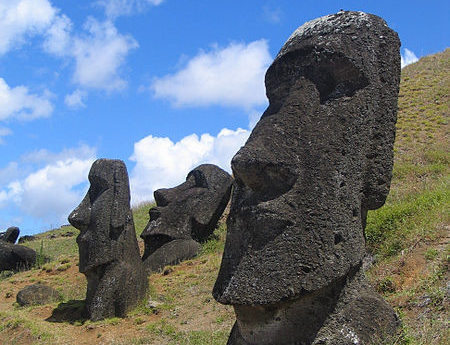
You do not need an archeology degree to understand the mystery. Easter Island Stonehenge, known as Moai, has been a puzzle for hundreds of years. Archaeologists have attempted to work out their inceptions and why precisely their construction stopped. A marvel covered in a riddle, what's significant all the more confusing is the area of the island…
A Bizarre Coincidence?

There are many similarities between all Moai heads. They are solid structures, implying that every statue was cut out of one substantial stone. Be that as it may, not every one of them is indistinguishable, some of them are extremely exceptional indeed. The tallest Moai statue is 33-feet tall and measures a stunning 82-tons. From a chronicled angle, the sculpted bodies have been settled on the Chilean Polynesian island since 1250 C.E.
A Strange Surprise Inside
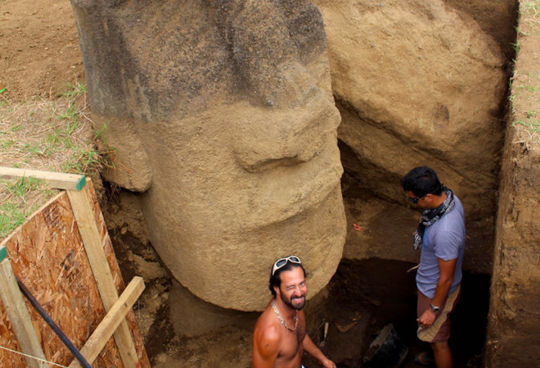
We all know that a man's curiosity is endless. Consequently, a group of archaeologists, officially known as the Easter Island Statue Project, put a mind-blowing measure of effort with a specific goal to excavate various Rapa Nui's statues. Obviously, the excavation point made some staggering disclosures about the Moai. Those disclosures were so significant that none of the archaeologists had ever read about - be it in their University, the field of work or even in any online archaeology degrees.
Markings Revealed Everything

A portion of the disclosures that the EISP made are totally stunning. Under one of the statues, Van Tilburg's group discovered an especially fascinating relic. The stone had a sickle shape cut deeply engraved on its surfaces. As per scientists, it was accepted to symbolize a kayak or a vaka.
Erupting At Any Moment
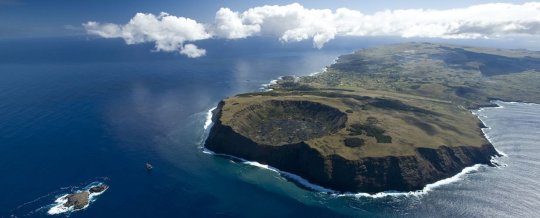
A trip to Easter Island gets more exciting as it is a home to three extinct volcanoes, the tallest remaining at an amazing 1674 feet. And if you visit the island by flight, the sights of the volcanoes are simply stunning. In any case, to be exact, Easter Island is actually one extensive fountain of liquid magma. The principle volcano passes by the name of Rano Kau and is situated inside the UNESCO World Heritage Site of Rapa Nui National Park.
Pushing 14 Tons of Concrete
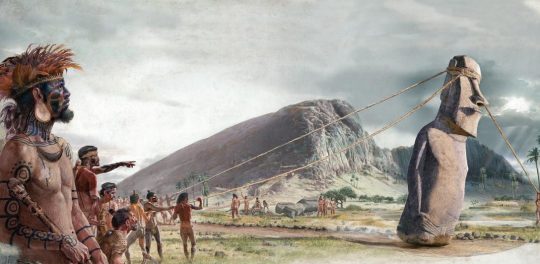
As far back as the statues' disclosure, it has been a puzzle as to precisely how the Moai would have been moved crosswise over Easter Island. Thinking of a transportation vehicle at that time would be silly. There have been numerous hypotheses how this could have been accomplished. One recommended that the statues would in all likelihood have required human work, ropes, and conceivably other equipment of transportation. Different speculations propose that individuals may have utilized logs to roll the Moai to their pointed goals.
Is It Possible?

Czech specialist Pavel worked together with Norwegian globe-trotter Thor Heyerdahl keeping in mind the end goal to build their own life-measure Moai statue. They took one rope, tied it around the head and after that wrapped another around the base of the statue. In a collaboration with 16 other individuals, they gradually moved the statue. But, soon realized that it would take too long.
What Happened To The People?
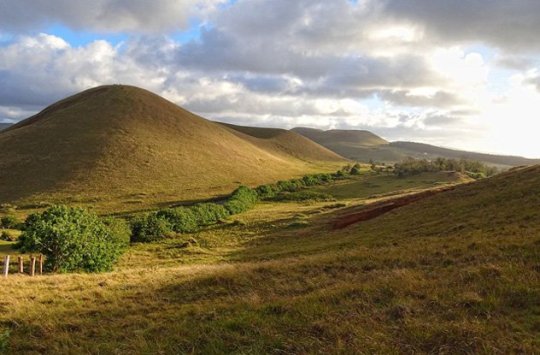
In spite of an assortment of speculations, it is, for the most part, concurred that the previous occupants of Easter Island were the designers of their own destruction, in any event to the extent living on the island was concerned. One hypothesis recommends tenants cleared the forests on the island, wrongly trusting that the trees would grow back rapidly.
Or Could It Be…

Another hypothesis that could clarify the tenants' vanishing was an invasion of rats capable of causing an infestation. A few history specialists trust that an overflow of food could have pulled in a convergence of rodents that may have stowed away in the kayaks of the general population who initially settled on the island.
Mass Destruction

In spite of the fact that there are numerous clashing theories on Stonehenge encompassing the people groups' vanishing, most anthropologists share a similar assessment on one specific actuality. Sooner or later in the Eighteenth Century, the Islanders began a mob, defying its pioneers. As assets lessened, pressures ascended amongst groups, and fights began to result.
Maybe It Was The Aliens
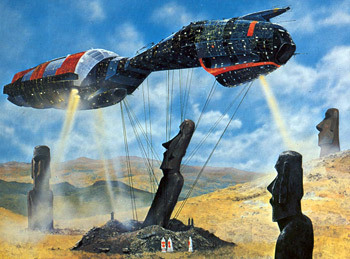
A totally left-field hypothesis proposes that the Moai could have been made by outsiders. The thought was proposed by Erich von Daniken in his book, Chariots of the Gods?: Unsolved Mysteries of the Past. And additionally his speculations about the Moai, von Daniken likewise attributes extraterrestrial impact to the development of the Egyptian Pyramids, and also the Nazca line illustrations. In any case, the reality remains that the stone used to develop the statues was from the actual island.
The Moai Roads
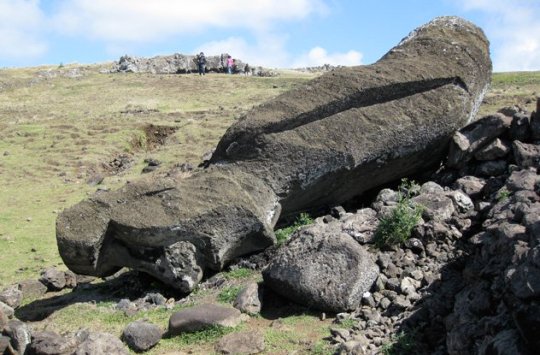
As per Thor Heyerdahl, Rapa Nui had antiquated streets that were utilized as the primary method of transport. They were found alongside numerous statues that were toppled over nearby them. Heyerdahl contradicted the theory on the Stonehenge by British archaeologist Katherine Routledge that the streets were really expected for ceremonial reasons.
Connections Elsewhere
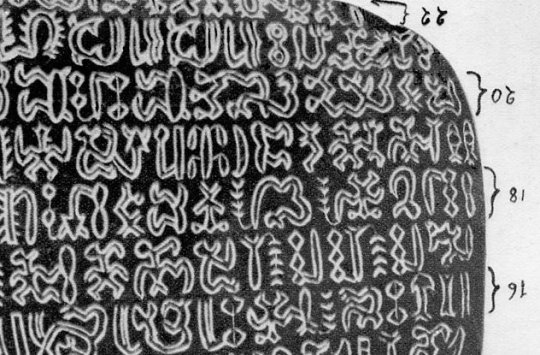
There has likewise been a secret encompassing the composition framework utilized on Easter Island amid its inhabitance. Robert M. Schoch trusted that the tablets with engraved calligraphy could go back 10,000 years more established than already anticipated. What's more, this would likewise make the island older.
Playing The Theory By Ear

Easter Island has given interesting knowledge into the skeletal structures of the general population who once lived there. As, the skull side view has all the earmarks of being long and limit, with a sign that the Rapa Nui individuals may have had longer ears than the normal person.
Who Will Be The Birdman?

These outlines are taken from the "Barbarian Cave," showing what is generally viewed as the Tangata Manu, or in English, "Birdman." This was the champion of a yearly rivalry on the island. Tenants would contend with each other to gather the main egg of the season. They would need to swim to an island near to, gather the egg and the first to come back to Rapa Nui would be hailed the Birdman and the pioneer of the group for a year.
Stands Out Like A Sore Thumb
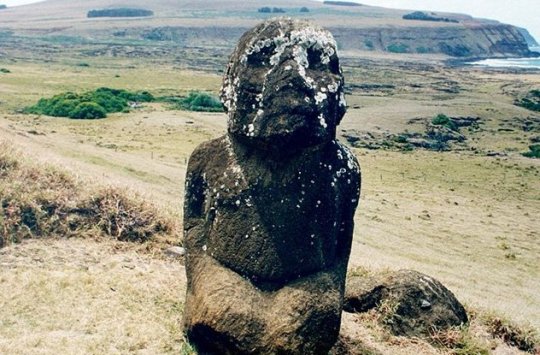
A standout amongst the most one of a kind looking Moai statues is the Tukuturi. Accepted to have been a physical sign of an antiquated artist, the figure was found in a stooping position, looking like the celebratory position amid the celebration of rui. Wearing a facial hair, Tukuturi is much a littler structure than regular Moai statues.
Easter Tools

A standout amongst the most particular archeological highlights that can be followed back to the Rapa Nui were the devices that the general population utilized. Known as Mata, these devices were built out of volcanic glass, which the general population made into an assortment of shapes and sizes. The majority of the tools found on the site were intentionally sharp, with a specific objective to cut filaments, cut wood and even to use for weaponry.
Grand Theft Moai
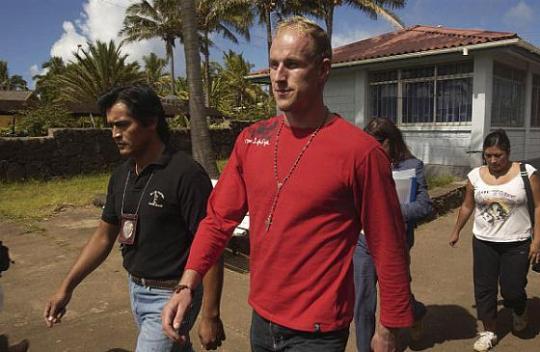
In a demonstration of sheer dauntlessness, a Finnish traveler went to Anakena shoreline and hacked an ear off one of the statues. Somebody saw Marko Kulju flee with the Moai's ear and revealed him to the police. Therefore, Kulju was captured and for his wrongdoing, fined $17,000 USD. At last, the discipline was a slap on the wrist as he could have put in seven years bolted up. The episode guaranteed stricter security methodology for travelers at the national park.
A Masterpiece
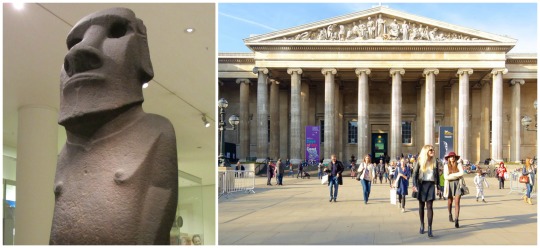
One of the most iconic amongst the most famous of the Moai isn't even on the island any longer. Known as Hoa Hakananai'a, this statue is in plain view at London's British Museum. In November 1868, a group from the British ship HMS Topaze recovered the statue from 'Orongo, Easter Island.
An Unexpected Cure
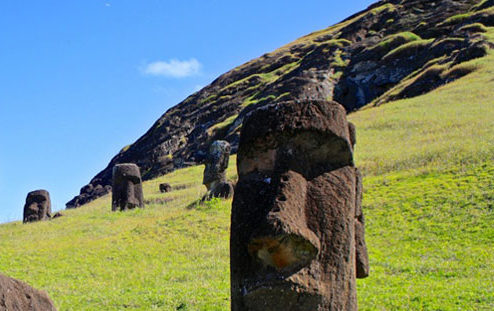
Another particular hypothesis encompassing the Moai was created by Dr. Anneliese Pontius. The psychiatry professor at Harvard Medical School hypothesized that the reason those islanders made the statues, in any case, was keeping in mind the objective to cure uncleanliness.
From The Old To The New
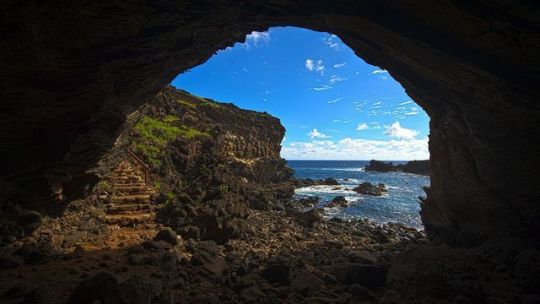
Easter Island ought not to be credited only for its rich history, which traversed more than a huge number of years. It likewise has a clamoring contemporary society that has seen radical changes in only one lifetime. One visit control remarked on how his 87-year-old awesome grandma spent her youth years experiencing childhood in a cave.
Tourism At Its Finest
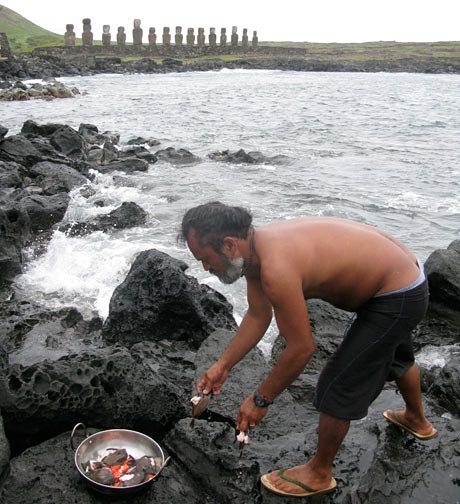
There are numerous people who provide visitors with extraordinary bits of knowledge into Rapa Nui life while on their heritage expedition. Take this man for instance. Moi works for an organization called Ancestral Tours who indicate voyagers how the Rapa Nui experience their lives, both through water and the land. In his water-based visits, Moi takes explorers to snorkel at Ovahe Beach.
The Capital

These days, there is a fair share of tenants on Easter vacation. 90% of the population lives in the capital, Hanga Roa, which in all trustworthiness isn't the most energizing area in Rapa Nui. The town has an exceptionally fundamental foundation, having just a single bank and a couple of private organizations.
Fantastic Hospitality

One prime case of the capitalization of Easter Island's current blast in tourism and hospitality is the Hangaroa Eco Village and Spa. It is on top of the line of all the hotels in the island's capital and the 75-room lodging is propelled by the first facilities that individuals of Rapa Nui lived in.
Things Have Changed

In spite of the numerous secrets encompassing Easter Island's history, there is one certainty that students of history collectively concur on. At a certain point ever, Easter Island confronted outrageous deforestation. It has been recommended that islanders consumed the majority of the trees so as to clear a path for clear land and furthermore to influence kayaks to out of the wood.
Location, Location, Location
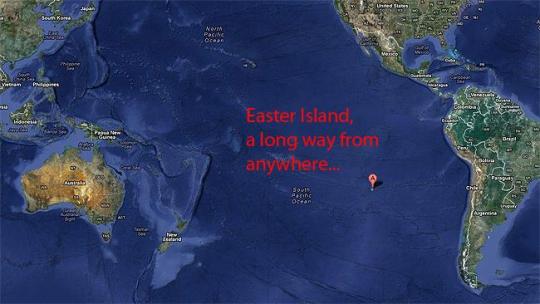
Obviously, Easter Island is a standout amongst the most remote areas on the planet. Pitcairn, which is 1,200 miles toward the west of the island, is its closest possessed neighbor. Its nearest territory is Chile, which is 2,300 miles away toward the east. So the inquiry remains: is Easter Island worth search a strenuous excursion?
So Why Is It Called Easter Island?
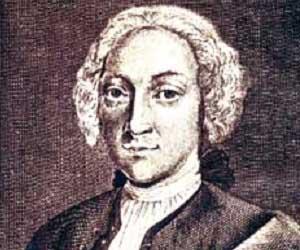
The significance of the island's name can be credited to its pioneer, and all the more particularly when he found it. Dutch adventurer Jacob Roggeveen was the primary European to reach the area, and he discovered it on Easter Sunday, April 5, 1722. A part of Chile, the official name of the island is Isla de Pascua, which likewise means "Easter Island."
The Original Settlers

In the Twentieth Century, a popular theory encompassing Easter Island was that Indians from the South American drift were the first settlers in the island. In any case, after detailed examination from archeologists and language specialists, this hypothesis has since been consistently exposed.
More To The Name

Yet, before the European explorers gave the Pacific Island the name we're most acquainted with today, the area embraced different names sometime before. The most seasoned name in recorded memory is Te Pito o Te Henua, which truly signifies "The Center of the World." Another name that occupants gave the island was Mata-Ki-Te-Rani, converting into the English "Eyes Looking at Heaven." Eventually, Tahitian mariners called the island Rapa Nui in the 1860's, and the rest was history.
Moai Have Bodies

The statues additionally have finish bodies that have been covered profound into the ground. Now and then, just their heads can be seen over the surface. It makes one wonder what else could be stowed away under the Earth, holding up to be found. After broad excavation lead by driving archeologists, it surfaced that the Moai's bodies have vigorously point by point tattoos.
The Director

Jo Anne Van Tilburg is the executive of the Easter Island Statue Project (EISP). After her group's persevering undertakings to unveil the secrets of the Moai, she discharged an announcement on the organization's site. She stated, "Our EISP excavations recently exposed the torsos of two 7m tall statues. Hundreds, perhaps thousands, of visitors to the island have been astonished to see that, indeed, Easter Island statues have bodies! More important, however, we discovered a great deal about the Rapa Nui techniques of ancient engineering.”
Who Were The Architects?

Notwithstanding its rich history and a heap of speculations, there is still no complete answer with respect to who precisely developed the Moai statues. One prevalent hypothesis proposes that the statues were cut by the most expert carvers of the antiquated Polynesians' specialty societies. Another proposal is that individuals from every tribe met up to make the Moai.
More Than Just A Pretty Face
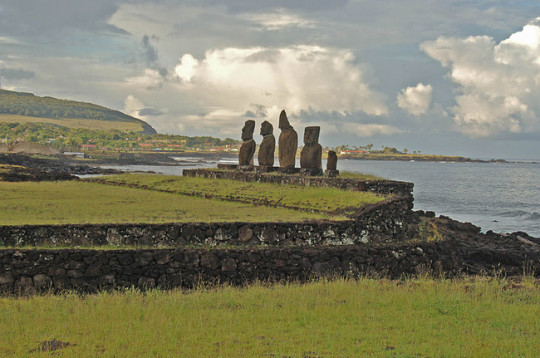
There are numerous speculations surrounding the imagery of the Moai and the more profound implying that they speak to. Numerous archeologists trust that they were built to be images of specialist and power. Be that as it may, to the island's occupants, they were something other than images. The Moai were thought to be physical signs of holy spirits.
The Moai
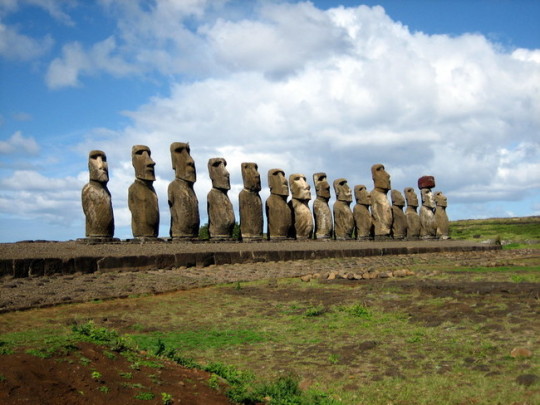
There is a solid possibility that you may have found out about Easter Island and its fascinating highlights in a topography lesson. The island is drenched with goliath stone figures that look like heads. Named after the Polynesian word for "head," the statues are known as the Moai.
World Heritage Status
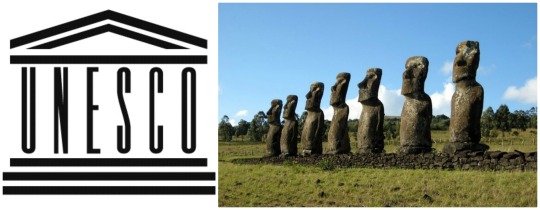
Easter Island is home to the Rapa Nui National Park, which was added to UNESCO's rundown of World Heritage Sites more than twenty years back. The island World Heritage status was secured because of its popularity around the globe and the famous Moai that grace the island.
Head Coverings
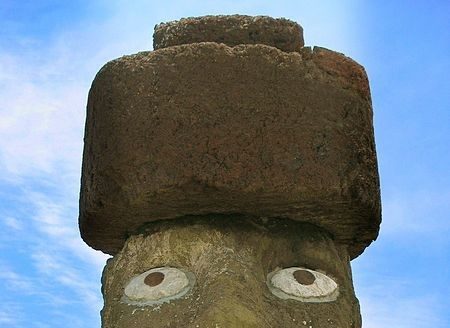
Did you realize that the Moai wore caps? The headgear, known as pukao in Rap Nui, really spoke to hair. The Islanders would tie the "hair" around the head like a ball. A similar reason that chieftains would not trim their hair was credited to this training.
Let’s Get Spiritual
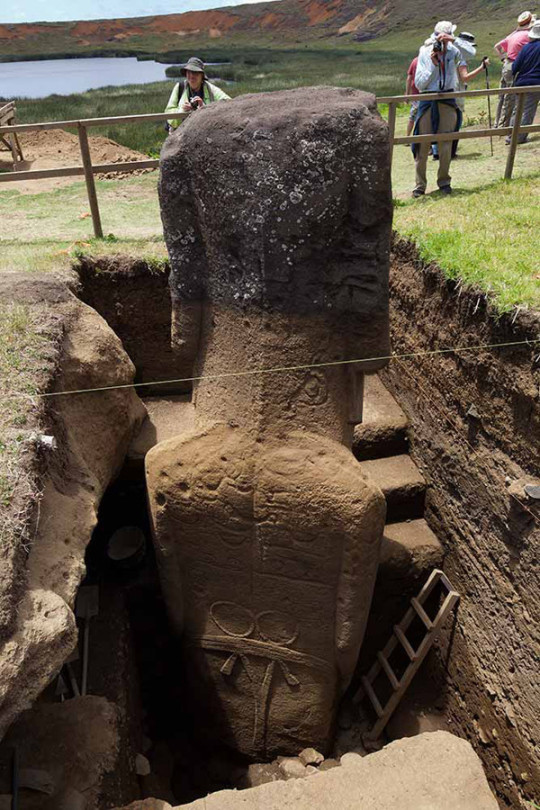
Amid Jacob Roggeveen's endeavor to Easter Island in 1722, he remarked on the profound propensities of the Rapa Nui individuals. He said that "they depended in the event of need on their divine beings or symbols which stand raised up and down the ocean shore in awesome numbers, previously which they tumble down and summon them."
Another Breed Of Statue
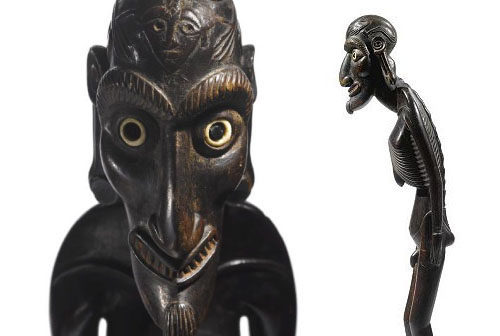
A structure that is frequently ignored on account of the grand Moai is the Mo'ai Kavakava. These little wooden figures likewise started from Easter Island, depicting lean men. The word kavakava actually means "ribs," which bodes well due to the skinny appearance of the man.
The Legend Of Ahu Akivi
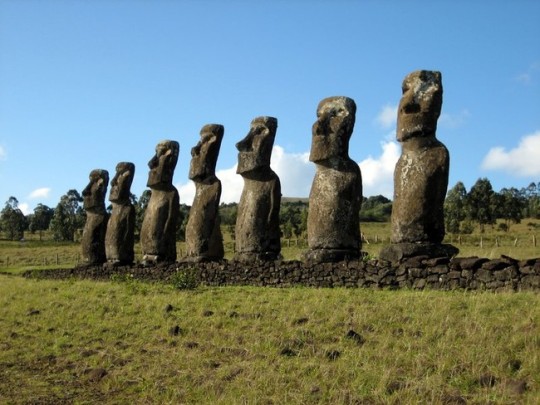
The site of Ahu Akivi has an especially exceptional part to play ever. Seven equivalent size Moai stand inland and confront the sunset amid the Spring Equinox. At that point, amid the Autumn Equinox, they confront far from the dawn.
Addressing Misconceptions
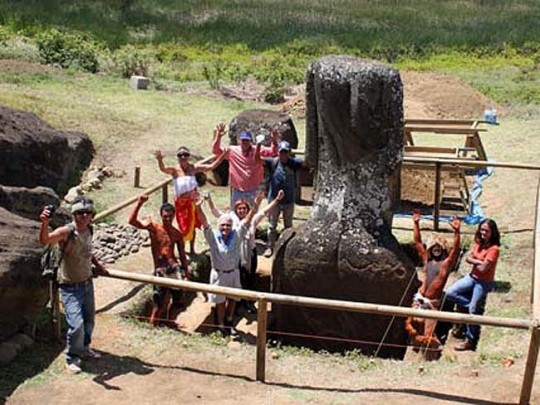
Van Tilburg felt that it was important to squash the misconceptions surrounding the Moai. She made this clear by saying that “the reason people think they are heads is there are about 150 statues buried up to the shoulders on the slope of a volcano, and these are the most famous, most beautiful and most photographed of all the Easter Island statues. This suggested to people who had not seen photos of that they are heads only.”
Read the full article
#Action#Archeologists#Australia#Austria#Belgium#Blog#breakingnews#buzz#buzzmic#BuzzmicInterational#comedy#ContentMarketing#Denmark#Drama#EasterIsland#facebook#Finland#forest#France#Germany#Head#Ireland#Italy#latestnews#Luxembourg#marketing#Media#Moai#Mysterious#Netherlands
0 notes
Photo

“The Kingdom of Heaven is like a treasure hidden in a field…There was a landowner who planted a vineyard…The ground of a certain rich man produced a good crop… There was a rich man who was accused of wasting his possessions… A man was going down from Jerusalem to Jericho…”
These familiar lines open the most exquisitely austere and natural of all stories, the parables told by the Word who uttered the world into existence. The only proof I have of their literary superiority is that no one has ever been able to match them. Those who try are like a man standing before a masterpiece of painting who says, “I can do that,” takes up a palette, and produces a Hallmark card.
A parable, to be pedantic, is a similitude employing a brief narrative in order to teach a spiritual lesson. In the case of Jesus, however, this definition is as unhelpful as it is accurate. John’s gospel has no parables, though it abounds in metaphors, but the three Synoptic writers, Matthew, Mark, and Luke, weave them in and out of the historical record, sometimes duplicating and even triplicating them. Depending on how one identifies a distinct parable, the number varies, but traditional listings name 24 in the gospels.
I am aware that no man can match the Man who spoke the parables, and so to reflect on them requires a more profound consideration and a deeper decibel than commentary on ordinary literature. There are, however, two very serious, if not original, points to remember before embarking on even the briefest glimpses of these texts:
First, the parables of Christ are unlike other Eastern parables and the lesser stuff to be found in current “spiritual best-sellers” in that they are not exotic. They do not distort or exaggerate nature in the way fables do. Kings are kings but not wizards, and rich men are rich but not omnipotent. The Good Samaritan carries the poor man to an inn; he does not fly him there on a carpet. The pearl of great price is valuable, but it is nothing more than a pearl.
Second, the parables really are what He said they are: hints of heaven. Because the glory of heaven is too great for us to bear just now, Christ uses parables as delicate and veiled indications of our true homeland. Every culture has to some extent sensed that the glory of heaven is too bright for our eyes. The ancient Egyptians kept a veiled image of Truth in their temple at Sais, believing that the actual sight of it would blind or even kill the viewer. The entire audience on the Mount would have fled if Christ had plainly stated in His sermon that His kingdom was of another world. He saved that declaration for Pontius Pilate, who only shook his cynical head.
Anything I say about the parables of Christ has this advantage over the perceptions of His original audience: The resurrection is now a known reality, and the temple veil has been torn open. And yet, we are still unprepared for the weight of glory: “Therefore speak I to them in parables, because seeing, they do not see, and hearing, do not hear” (Matthew 13:13).
Understanding Christ’s parables belongs to the childlike. The humble of heart recognize the lessons of the parables as they play out in the course of history. They surface in both the mistakes and the courage of the Crusaders, in both the glorious architecture and the inhuman tortures of the High Middle Ages, in the zealous missionaries and the haughty degenerates of the Counter-Reformation, and in the witness of the martyrs at the hands of the maniacs of the 20th century.
The parabolic treasure is hidden in the concrete of Wall Street as truly as in a Galilean pasture. Every culture, advanced or backward, can understand a parable, because it offers a universally sought pearl. Mr. Caveman would have nodded some form of assent, as would the French heirs to Louis IX and Louis Pasteur and the English scions of St. Thomas More and Samuel Johnson.
Parables are often dismissed as too simple: Because a child can understand them, adults must yawn through them. And yet, Christ spoke in parables. That fact is infinitely interesting and eternally salvific. In the face of worldly-wise criticism, one recalls the story of the tourist in Florence who sniffed that he was not all that impressed with the Uffizi’s collection. A guard, heir to an ancient mandate to care for these treasures, replied in halting but intelligible English, “Here we do not judge the pictures; the pictures judge us.”
This point was lost on many of those who first heard Christ’s parables, and divine providence permits us to view their example as a cautionary icon of confused pride: “When the chief priests and the Pharisees heard Jesus’ parables, they knew he was talking about them. They looked for a way to arrest him, but they were afraid of the crowd because the people held that he was a prophet” (Matthew 25:45-46). In their perverse pride, they would arrest a man for being arresting and would crucify Him for being a king. But in another world that is not so, and of this world the parables speak.
By: FR. GEORGE W. RUTLER
0 notes
Text
Star Power Assembles for "The King of Kings"

Get ready for a visually stunning and star-studded retelling of the life of Jesus Christ! Mofac Animation's new upcoming film, "The King of Kings" isn't your everyday Sunday school cartoon. At first glance "The King of Kings" easily boasts a powerhouse voice cast. The cast includes legendary actors Sir Ben Kingsley, Pierce Brosnan, and Mark Hamill
Kingsley lends his iconic voice to High Priest Caiaphas, who oversaw Jesus' trial. Hamill takes on the role of King Herod, infamous for the Massacre of the Innocents. And Brosnan brings Pontius Pilate, the man who ultimately ordered Jesus' crucifixion, to animated life. These heavyweights join an already impressive cast featuring Academy Award winners Kenneth Branagh and Forest Whitaker. There's also Golden Globe winners Oscar Isaac and Uma Thurman, and rising star Roman Griffin Davis too!
A Dickens of a Tale
The film takes a unique approach, following Charles Dickens and his youngest son Walter on a fantastical journey through time. Dickens uses his storytelling magic to bring the life of Jesus, his struggles, and his adversaries to life for his son. This creative twist allows the story to be relatable and engaging for audiences of all ages.
The talent doesn't stop on screen. "The King of Kings" is directed by Seong-ho Jang, a highly respected Korean filmmaker known for his groundbreaking visual effects work. The script is a collaboration between Jang and Rob Edwards, who has writing credits on Disney classics like "The Princess and the Frog" and "Treasure Planet." With this team at the helm, "The King of Kings" promises to be a visually stunning and emotionally powerful experience.
A Story for the Ages
"The King of Kings" isn't just another animated film. It's a chance to experience one of the most important stories ever told in a fresh and engaging way. The all-star cast, innovative storytelling, and talented production team make this a must-see for families and anyone interested in the life of Jesus Christ.
Bonus Fun Fact: Did you know "The King of Kings" is actually based on a little-known short story by Charles Dickens himself? This lesser-known work adds another layer of intrigue to this upcoming animated epic.
While a release date hasn't been officially announced, "The King of Kings" is expected to hit theaters sometime around Easter 2025. Keep an eye out for more details and get ready for a truly unforgettable cinematic experience!
Source: Mofac Animation
Read the full article
0 notes
Text
Star Power Assembles for "The King of Kings"

Get ready for a visually stunning and star-studded retelling of the life of Jesus Christ! Mofac Animation's new upcoming film, "The King of Kings" isn't your everyday Sunday school cartoon. At first glance "The King of Kings" easily boasts a powerhouse voice cast. The cast includes legendary actors Sir Ben Kingsley, Pierce Brosnan, and Mark Hamill
Kingsley lends his iconic voice to High Priest Caiaphas, who oversaw Jesus' trial. Hamill takes on the role of King Herod, infamous for the Massacre of the Innocents. And Brosnan brings Pontius Pilate, the man who ultimately ordered Jesus' crucifixion, to animated life. These heavyweights join an already impressive cast featuring Academy Award winners Kenneth Branagh and Forest Whitaker. There's also Golden Globe winners Oscar Isaac and Uma Thurman, and rising star Roman Griffin Davis too!
A Dickens of a Tale
The film takes a unique approach, following Charles Dickens and his youngest son Walter on a fantastical journey through time. Dickens uses his storytelling magic to bring the life of Jesus, his struggles, and his adversaries to life for his son. This creative twist allows the story to be relatable and engaging for audiences of all ages.
The talent doesn't stop on screen. "The King of Kings" is directed by Seong-ho Jang, a highly respected Korean filmmaker known for his groundbreaking visual effects work. The script is a collaboration between Jang and Rob Edwards, who has writing credits on Disney classics like "The Princess and the Frog" and "Treasure Planet." With this team at the helm, "The King of Kings" promises to be a visually stunning and emotionally powerful experience.
A Story for the Ages
"The King of Kings" isn't just another animated film. It's a chance to experience one of the most important stories ever told in a fresh and engaging way. The all-star cast, innovative storytelling, and talented production team make this a must-see for families and anyone interested in the life of Jesus Christ.
Bonus Fun Fact: Did you know "The King of Kings" is actually based on a little-known short story by Charles Dickens himself? This lesser-known work adds another layer of intrigue to this upcoming animated epic.
While a release date hasn't been officially announced, "The King of Kings" is expected to hit theaters sometime around Easter 2025. Keep an eye out for more details and get ready for a truly unforgettable cinematic experience!
Source: Mofac Animation
Read the full article
0 notes
Note
oi, poderia fazer icons do mark pontius? por favor
postei ♥
1 note
·
View note
Note
oi, poderia fazer icons do mark pontius do foster the people (com psd) ? por favor
oi, postei amor, espero que goste 💙
0 notes